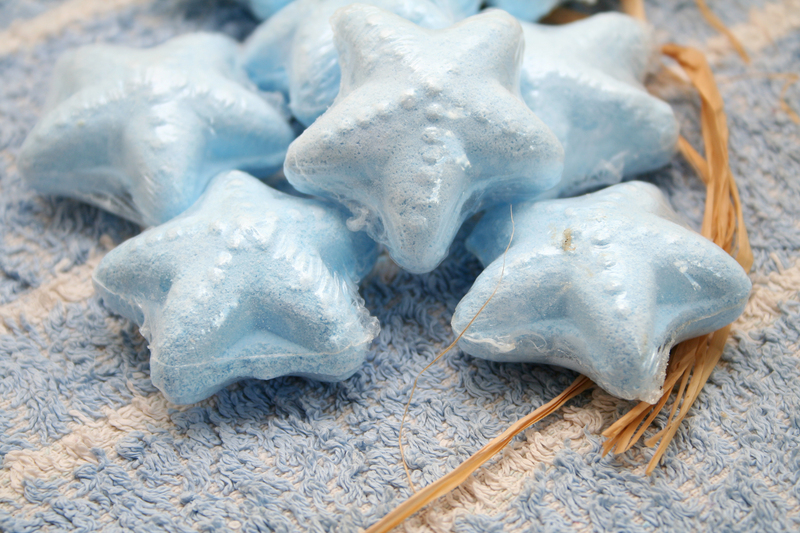Strategies for Sustaining a Clean, Allergen-Reduced Environment
Posted on 26/08/2025
Strategies for Sustaining a Clean, Allergen-Reduced Environment
Maintaining a clean, allergen-reduced environment is crucial for the health and well-being of all occupants. Whether you suffer from allergies, asthma, or simply want a healthier home or workplace, allergen reduction strategies are essential for long-term comfort and prevention. Employing the right methods not only minimizes exposure to allergens such as dust mites, mold, pet dander, and pollen but also creates a more refreshing and hygienic atmosphere. This comprehensive guide explores practical, effective strategies for sustaining a clean and allergen-minimized environment, helping you breathe easier and live better.

Why Is an Allergen-Reduced Environment Important?
Indoor spaces are often a hotspot for allergens, especially without regular cleaning and prevention routines. Allergens can trigger uncomfortable symptoms, ranging from sneezing and itching to serious respiratory issues. For people with allergies, asthma, or immune sensitivities, practicing allergen control is more than a matter of comfort--it's a necessity. Furthermore, cleaner indoor air reduces the risk of illnesses and improves overall quality of life for everyone.
Common Allergens Found Indoors
- Dust mites
- Mold spores
- Pet dander (skin flakes from cats, dogs, and other animals)
- Pollen (especially during peak seasons)
- Cockroach droppings
- Volatile Organic Compounds (VOCs) from cleaning agents, furnishings, paints
Comprehensive Strategies for Reducing Allergens
1. Prioritize Regular and Deep Cleaning
Routine cleaning is the foundation of sustaining an allergen-reduced space. Dust and debris accumulate over time, providing perfect habitats for dust mites and mold. Here's how to optimize your cleaning regimen:
- Vacuum carpets and rugs at least twice weekly using a vacuum with a HEPA filter to trap fine particles and dust mites.
- Mop hard floors with damp (not wet) mops to capture rather than stir up dust.
- Dust surfaces with microfiber cloths which capture particles more effectively than traditional dusters.
- Wash bedding, curtains, and stuffed toys weekly in hot water (at least 130?F/54?C) to kill dust mites and remove pet dander.
- Declutter often--piles of books, toys, and clothing can gather dust and allergens.
2. Control Humidity and Moisture
Mold and dust mites thrive in moist, humid environments. Sustaining a clean, allergen-controlled environment depends on keeping humidity in check:
- Maintain indoor humidity between 30% and 50% using dehumidifiers or air conditioners.
- Use exhaust fans in bathrooms, kitchens, and laundry rooms to reduce moisture build-up.
- Promptly repair plumbing leaks or water damage to prevent mold growth.
- Clean up any spills immediately to stop dampness from seeping into flooring or walls.
3. Improve Indoor Air Quality
Contaminated air recirculates allergens, so focus on indoor air purification as a central pillar of your allergen reduction strategy:
- Air purifiers with HEPA filters can remove up to 99.97% of allergens from the air.
- Replace HVAC filters monthly or as recommended by your manufacturer, opting for high-efficiency particulate filters (MERV 11 or higher).
- Ventilate your home regularly by opening windows (when the outdoor air is low in pollen and pollution).
- Avoid scented sprays, candles, and chemical-based air fresheners that can worsen respiratory symptoms.
4. Choose Allergy-Friendly Furnishings and Decor
Your selection of home goods can significantly affect allergen levels:
- Opt for hard floors like tile, hardwood, or linoleum instead of wall-to-wall carpets which trap dust and dander.
- Use allergy-proof covers (encasements) for mattresses, box springs, and pillows to block dust mites and pet dander.
- Minimize soft furnishings such as heavy drapes and upholstered chairs, as they collect more allergens than blinds or leather furniture.
- Launder decorative throws and cushion covers regularly.
5. Implement Strict Pet Allergen Management
Pets are beloved family members but can be a major allergen source (even hypoallergenic breeds produce dander). To maintain a pet allergen-reduced space:
- Keep pets out of bedrooms and off upholstered furniture as much as possible.
- Bathe and groom animals frequently outside the home.
- Clean pet bedding, toys, and cages/kennels weekly.
- Consider investing in air purifiers designed for pet homes.
6. Pollen Prevention Protocols
Seasonal allergies can invade indoor spaces via open windows, clothing, and pets. Implement these steps to maintain a pollen-free environment:
- Shut windows and doors during high pollen seasons (spring and fall) and use air conditioning for ventilation.
- Remove outdoor shoes at the entrance and wipe pet fur after outdoor walks.
- Launder clothing and hair after spending time outside.
- Vacuum entryway mats and wash surfaces near doors regularly.
7. Embrace Green Cleaning Practices
Using harsh chemicals and scents can release irritants into the air, exacerbating symptoms. Instead, pivot to eco-friendly, hypoallergenic cleaning products:
- Choose fragrance-free or naturally scented products.
- Use baking soda and white vinegar as non-toxic alternatives for many cleaning tasks.
- Avoid mixing cleaning agents such as ammonia and bleach, which create hazardous fumes.
- Read product labels to ensure they're certified as allergy-safe or non-irritating.
Room-by-Room Allergen Minimization Tips
Bedroom
- Encapsulate mattresses and pillows with allergen-proof covers.
- Wash bedding and pillowcases weekly in hot water.
- Replace pillows every 2 years--they accumulate dust mites and allergens over time.
- Keep pets and stuffed animals off the bed if possible.
- Choose roller shades or blinds over fabric curtains.
Living Room
- Use leather or vinyl couches instead of fabric where possible.
- Vacuum all soft furnishings and carpets regularly.
- Limit decorative pillows and launder them monthly.
- Use an air purifier in main living areas.
Kitchen
- Use exhaust fans when cooking to eliminate humidity and particles.
- Clean underneath sinks to prevent mold growth.
- Store food in airtight containers to deter pests like cockroaches.
Bathroom
- Wipe down shower walls and tiles after each use.
- Run an exhaust fan during and after showers to lower moisture.
- Replace or wash bath mats regularly.
Long-Term Allergen-Reduction Solutions
1. Upgrade Your HVAC System
- Install HEPA filters or electrostatic filters in your central air system.
- Schedule professional duct cleaning every 3-5 years, especially in older homes.
- Consider UV light systems to reduce mold and bacteria in air ducts.
2. Renovate for Allergy Safety
- Replace old carpeting with hard flooring during remodels.
- Install tile, stone, or washable paint in bathrooms and kitchens for easier mold control.
- Improve insulation to prevent condensation and dampness.
3. Regular Allergen Assessment
- Schedule indoor air quality testing annually for mold, VOCs, and particulates.
- Inspect for hidden leaks, water damage, or pest infestation regularly.
Behavioral Changes for Maximum Effect
While products and cleaning methods are important, lifestyle changes are essential for long-lasting, allergen-reduced spaces:
- Change and launder clothes after coming home from outdoors during high pollen seasons.
- Remove shoes at the entryway to limit tracked-in allergens.
- Encourage children to limit stuffed animals and wash them often.

Myths and Misconceptions About Allergen Reduction
- Myth 1: Allergen-free environments are possible.
Reality: It's nearly impossible to eliminate all allergens completely, but with the right strategies, you can significantly reduce them and minimize symptoms. - Myth 2: Only people with allergies need to worry about allergens.
Reality: Even healthy people can benefit from allergen-controlled environments, improving respiratory health and reducing risks for illness. - Myth 3: Cleaning products always help with allergens.
Reality: Some cleaning products release chemicals that can worsen allergies--always opt for non-toxic, hypoallergenic options.
Conclusion: A Healthier Home Starts With Proactive Allergen Management
Investing time and effort into creating a clean, allergen-safe environment pays dividends in health, comfort, and peace of mind. By combining regular cleaning, smart home improvements, air management, and daily habits, you can create welcoming, allergy-friendly spaces year-round. While you may not be able to eliminate every allergen, sticking to these comprehensive strategies ensures that indoor air is fresher, surfaces are cleaner, and every member of your household can thrive.
Key Takeaways:
- Consistent, thorough cleaning is your strongest weapon against indoor allergens.
- Humidity and moisture control curb mold and dust mite growth.
- Smart furnishing and design choices reduce trapped dust and dander.
- Behavioral changes and awareness help keep allergen loads low over time.
- Eco-friendly cleaning practices ensure a healthy, chemical-free environment.
Start making gradual changes today and enjoy the profound benefits of an allergen-reduced, healthier environment for years to come!




